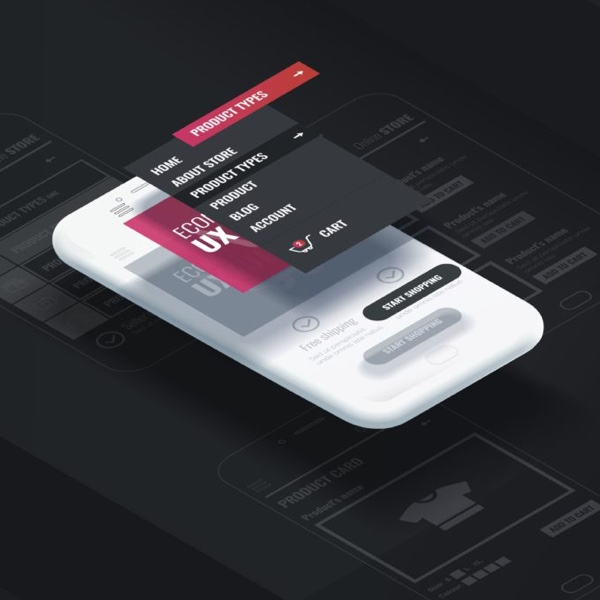Can skipping user testing really kill your next product? After all, you’ve already planned for any potential problems from the project’s onset. And you’ve done extensive research to uncover any competitive products and issues that could stifle success. Your designers created sketches and wireframes with several iterations to reach a consensus that they’re going in the right direction. So, what’s the big deal? Maybe you’re trying to rush to market before the competition. Why not move forward and develop the product without testing? If you think bypassing the user testing phase is a safe choice, think again.
What history tells us about testing
Testing products has been around as long as products themselves. It makes sense that if a product stands a chance of being successful, it needs to work. And not just once or twice, it needs to work consistently as promised to attract customers. By testing products directly with users, you increase the odds of its success. Not testing is risky. For example, there’s something to be learned from Netflix when they decided to split their streaming and DVD services (Qwixster). The plan was to make things “tidier” for the company but without regard for the inconvenience to their customers. Unfortunately, Netflix failed to do testing to ensure the change would be a welcome change to its customers. In addition, they failed to “consider user experience and customer sentiment.” The last thing customers wanted to do was set up two separate accounts. As a result, the split model failed.
But then again, just because you test your product, doesn’t automatically spell success. Coke® is a good example of why testing alone cannot measure the market’s reaction. For example, in 1985, when New Coke was released, it was a failure. And the failure was a surprise. After all, Coke tested the new product with over 200,000 testers who “preferred it over the traditional version.” So, what was the problem? As it turned out, old habits die hard. Coke drinkers were loyal to the traditional version and weren’t about to give up something they drank regularly. In this example, doing the research and testing the product wasn’t enough. Coke failed to “gather comprehensive customer insight that gives accurate and realistic information.” This was a missed opportunity to truly understand what motivated their loyal customers. Gaining this valuable user input is key to successful product development and in this case was overlooked.
Reviews can kill a product (the best argument to test your product!)
And if history hasn’t taught you anything about the need for testing, think about online customer reviews. Ponder what happens when dissatisfied customers jump online to share their experience with the world. In the past, you might have had a better chance of getting away with faulty or poor-quality products because of slow word of mouth. But today, technology and social media have made methods of communications virtually on demand. Customers can create havoc on your company’s reputation by posting their bad experience within minutes.
So, if your product doesn’t do what it promises, shots will be fired by your customers. Be prepared for an onslaught of unhappy consumers ready and willing to share their opinions of your product or service. So, if your product is poor performing, news will spread fast and put your product and reputation on the line. Performing user testing will help you work through your product’s bugs with necessary improvements before going to market.
What research says about customer reviews
Worst of all, research shows that just one bad review can wipe out 40 good ones. In fact, consider these stats on customer reviews. According to Inc., 91 percent of unhappy customers will no longer do business with a company. Also, “dissatisfied customers typically tell nine to 15 other people about their experience; some tell 20 or more.” And 86 percent of consumers who experienced a negative customer event “quit doing business with a company.” All of which can cause a company’s sales to plummet and be a death sentence for your business. Bottom line – learn from your user group in the testing phase before a product is released. The only news you want to be shared by users is how amazing your product is and how well it works!
Prepare for the worst during user testing
Your project seemed to effortlessly float through the design solution process due to great research! That is, until the testing begins. At this point, everything you thought would be confirmed during testing actually backfires. Users are sharing their experiences and the feedback is negative. And as you observe them using your product, things don’t exactly pan out they way it was designed. But before you pull your hair out, realize the benefit of this early constructive criticism. Knowing the pitfalls of a product before going to market allows the opportunity to fix it.
So, don’t be married to your project before the testing phase, as it is likely to change considerably and maybe beyond all recognition of the original design. If done correctly, testing according to feedback leads to improvements and a better simulated product. And this newly-improved prototype will be thrown to the wolves again for additional testing. Be happy that you are working out the problems before the product is finalized.
Choose the right users for testing
Long before user testing begins, you’ve done the research on similar products and competitors. But even more important is the research you conduct on potential users of your final product. Who are they? What’s important to them when it comes to similar products? What are they using now? And the list goes on. Your research should provide a clear picture of potential users and help you to create user personas. The earlier in the design process that user research is gathered, the more likely the design will suit users’ needs.
When testing does come around, UX design elements and content should reflect an understanding of what users want. Be sure to establish a target group. This group will be made up of users most likely to use your product and represent future end users. For example, you want include pet owners to try a pet app that organizes pet vaccinations and vet visit data. The closer you get to likely users by narrowing down the target group the better the use group. Finding the right users will help dramatically in creating the best design. Therefore, your selected user group is a pivotal part of your testing process. So choose an existing group or consider recruiting your next user group.
The power of user feedback takes preparation
Of course, having the right user group in place is not enough to ensure testing victory. Much of the success at this point depends on you. Because just creating a prototype and putting in front of the right users won’t produce the testing criteria needed to perform a great test. One of the best results that come from user testing is to find out what underlaying problems exist with the current design. And your user group has the answers to what may be wrong with your product. So, it’s a good idea to get as much input as possible.
Make sure you have a plan for what you want to investigate and how your test will uncover the truth about your product. For example, you’ll want to ask users the right questions that zero in on what you are investigating. Your questions should be clear and open ended. And have a plan for how you will document issues and how test users can communicate the problems they experience.
Addressing feedback from user testing
After user testing, it’s time to evaluate the results. What problems surfaced? How many testers were involved in testing? Did any of the test cases fail altogether? What was the overall scores? Once the feedback rolls in, you may first feel compelled to defend the design choices and want to explain the thought process behind them. It’s best to listen carefully with an open mind to what the user group is telling you about the product. The evaluation process will involve collecting, aggregating, and analyzing data. But it’s also important to analyze each and every test case in context. Remember to consider the state of mind and if users showed emotion during the test. As you gather feedback, learn from it. Once results are validated, begin addressing problems and start improvements. Then create a new prototype to test and start the user testing process over again.
A few user testing tips
Test early.
Test early in the development phase. Doing so will save you time and effort down the road as well as costs. By testing early, you will address problems sooner when the fixes are easier, less time consuming and less costly.
Test often.
Like it or not, the main purpose of user testing is to expose problems that were not considered in the design. UX design, in particular, needs to home in on what motivates users to continue through screens. How they choose to navigate through your product during the test session is bound to reveal issues. So, the more often you test the better off you’ll be to get rid of bugs and missteps in the design.
Run a pilot test.
Want to be sure that you haven’t missed anything before testing begins? Make a check list. Then, do a pilot test a couple of days before the test session. This will help to be sure the equipment works, the facilitator is confident, and materials and interview questions make sense. Doing a pilot also gives you an opportunity to practice and make any necessary adjustments.
Interview users before testing.
If you have existing users, start there. If not, you’ll need to find individuals who are representative of potential end users of your product. Who is the target audience? Who is likely to benefit from this product? Consider what ideal users look like relative to demographics, skills, and other characteristics of those who would find value in the product. Then interview potential test users to be sure they are a good fit.
Listen, listen, listen!
Listening to user feedback is critical and cannot be understated. They hold the key to your product’s success. Pay close attention to what they’re saying, how they’re feeling about using the product, if they are getting frustrated, etc. You never know, they may even have some design improvements to share!
User testing may just be the best investment you can make to ensure product success. Plan carefully, choose the right users to test, and be prepared for product improvements. But whatever you do, don’t skip the user testing process. It’s just too important.
Let Bitbean help you achieve your company’s vision with custom software designed to meet your customers’ needs with our Shifting Prospectives approach. We test all products to ensure the highest quality and best possible outcome. Contact us today for a free consultation.







